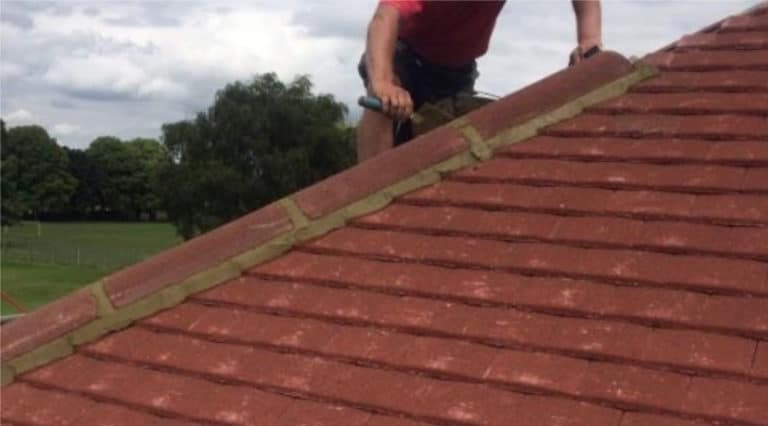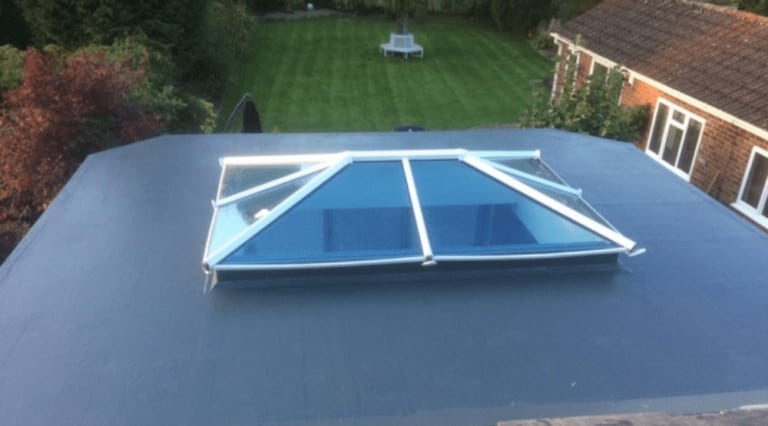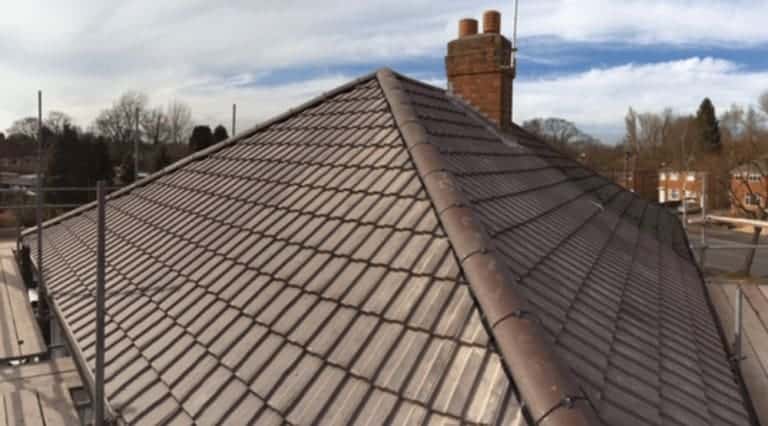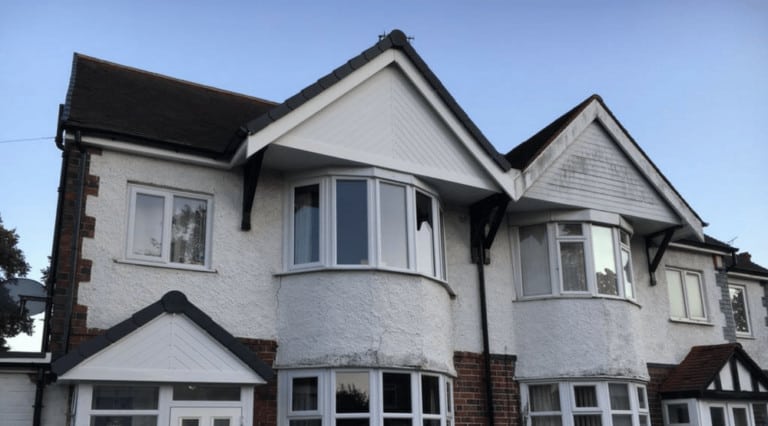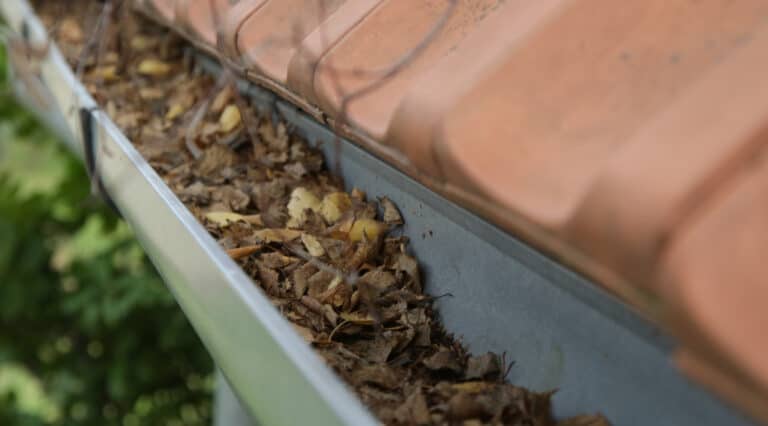Find My Local Expert Warning Signs Your Home Needs Roof...
Read More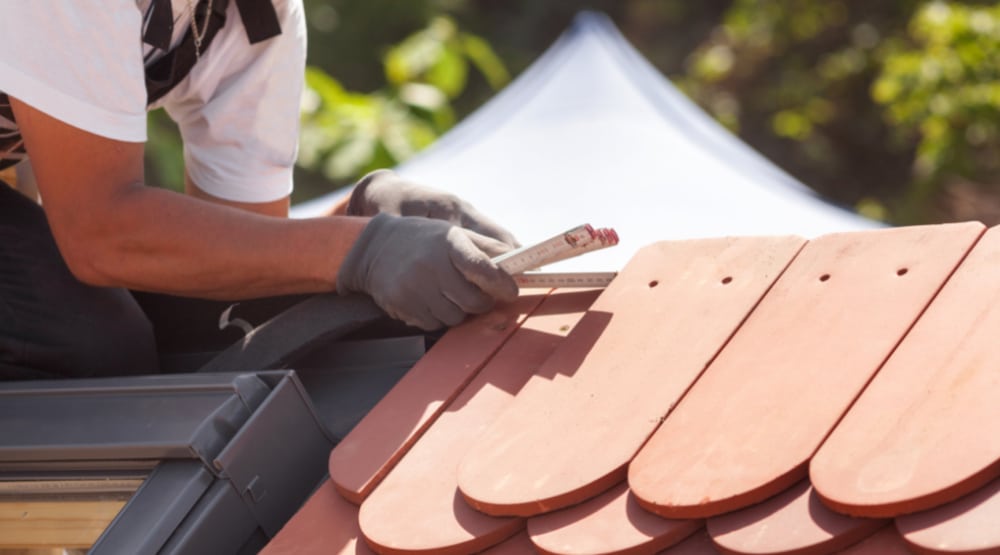
Slipped Tile: A Hidden Danger Lurking in Your Home
Slipped tiles on a roof can be a common occurrence, especially after strong storms or due to age-related defects. These slipped roof tiles can lead to several problems, including water damage and compromised structural integrity. It is essential to address this issue promptly to prevent further damage and costly repairs.
Roof tiles can slip from their original position due to various reasons, such as damaged roof battens, weak roof timber, or improper installation. Once a tile slips, it exposes the roof deck and underlying materials to the elements, including rainwater, which can seep into the interior of the house and cause water damage. This water intrusion can result in mold growth, weakened ceilings, and even structural damage.
Ignoring slipped tiles or delaying their repair can worsen the situation. As the slipped tile exposes the roof to further moisture, other sections of clay roof tiles are more prone to displacement. Over time, this can lead to extensive roof damage, requiring a complete roof replacement.
To prevent such consequences, it is crucial to address slipped tiles promptly. Hiring a professional roof repair specialist who is experienced in dealing with roof defects and repairs can ensure that the issue is resolved efficiently. These specialists can identify the cause of the slipped tile and implement the necessary repairs, ensuring the roof’s integrity and protecting the home from water damage.
Will it Leak?
When a tile slips from its original position on the roof, it can expose the underlying materials to the elements, including rainwater. This can raise concerns about potential leaks and water damage to the interior of the house. Addressing slipped tiles promptly is essential to prevent further complications and ensure the integrity of the roof.
3 Reasons Why Roofing Tiles Slip
Roofing tiles play an important role in protecting our homes from the elements. However, there are several reasons why these tiles may slip or become dislodged, potentially leading to water damage and costly repairs. Understanding these reasons can help homeowners prevent such issues and ensure the longevity of their roof.
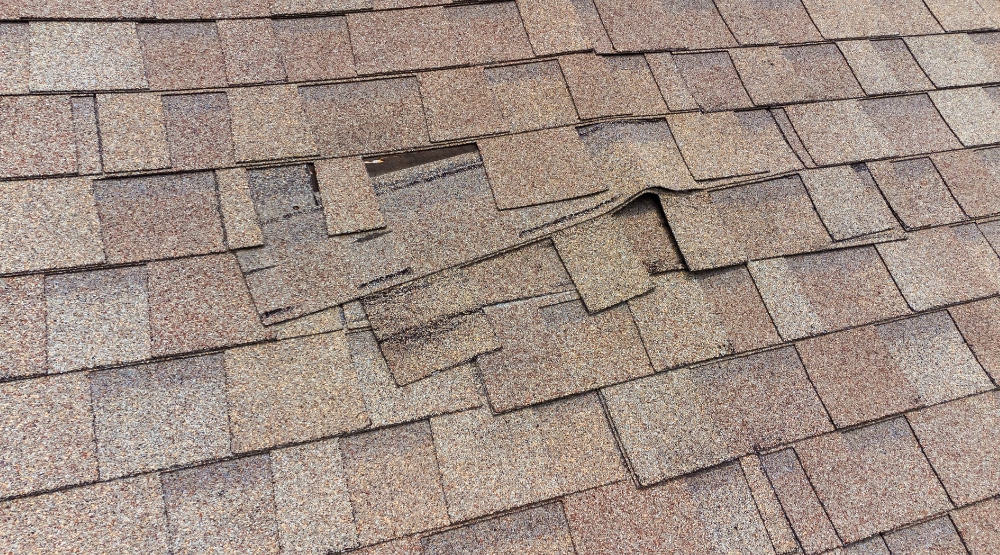
The first reason why roofing tiles may slip is due to excessive wind and rain, particularly during strong storms. The forceful gusts of wind and heavy downpour can create enough pressure to dislodge the tiles from their original positions, leaving the roof vulnerable to water penetration and further damage.
Corroded nails are another culprit behind slipped tiles. Over time, nails can become corroded due to exposure to the elements, leading to their weakened grip on the roofing tiles. When these nails lose their strength, the tiles become susceptible to movement and can eventually slip off the roof.
Deteriorated wood is yet another factor that can cause roofing tiles to slip. Whether it’s due to termites infestation or water damage, the wood supporting the tiles can deteriorate and lose its structural integrity. This weakens the overall stability of the roof and increases the chances of tiles slipping out of place.
#1 Excessive Wind & Rain
Excessive wind and rain can have a significant impact on roof tiles, potentially causing them to become dislodged and slip. During strong storms, the forceful gusts of wind can create immense pressure on the tiles. Combined with heavy rainfall, this can weaken the grip of the tiles and lead to their movement.
When tiles become dislodged and slip, it can result in water damage if left unaddressed. Gaps in the roof’s protective layer can allow water to penetrate into the underlying structures of the roof and eventually leak into the home. This can lead to costly repairs, as well as potential issues with mold and mildew growth.
If homeowners notice slipped tiles after a storm, it is essential to take immediate action. Contacting a professional roofer should be a priority, as they have the expertise to safely assess the extent of the damage and make necessary repairs. Additionally, homeowners may want to consider the installation of a temporary roof to provide immediate protection until permanent repairs can be made.
It is also important to notify insurance companies if the damage is significant, as they may cover the cost of repairs. Documenting the damage with photographs can help with the insurance claims process.
#2 Corroded Nails
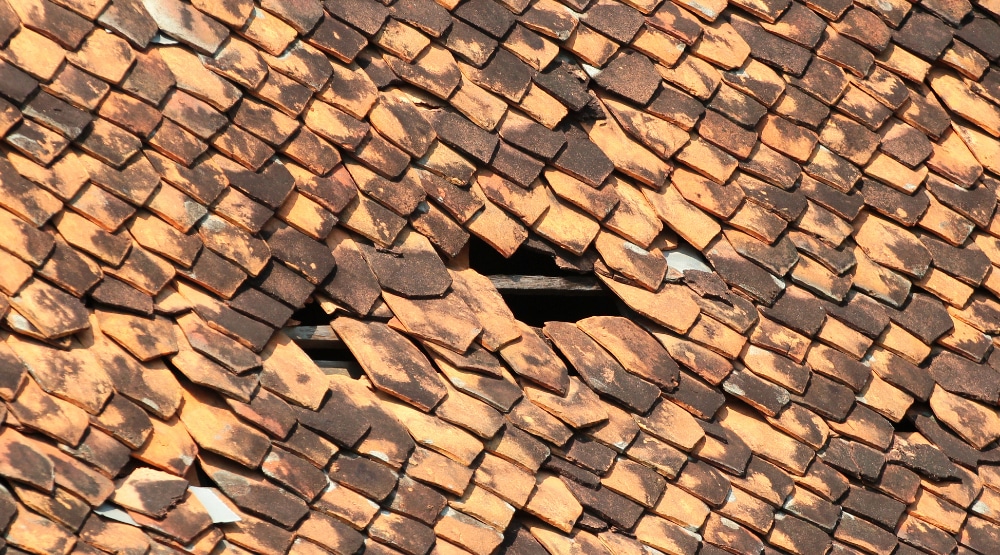
Corroded nails play a crucial role in securing roof tiles and preventing them from slipping out of place. These specialized roofing nails are designed specifically for attaching tiles to the roof deck, providing a strong and durable connection.
However, over time, exposure to the elements can cause these nails to corrode and weaken. Rain, snow, and humidity can lead to rust and corrosion, compromising the structural integrity of the nails. This deterioration can ultimately result in the loosening of tiles and their eventual displacement.
When nails become weakened due to corrosion, they can no longer securely hold the tiles in place. This can lead to gaps and spaces between the tiles, allowing water to seep in and cause damage to the underlying structures of the roof. Over time, the repeated exposure to moisture can result in more severe issues like rot, mold, and even structural damage.
To prevent slipped tiles caused by corroded nails, it is crucial to address any signs of deterioration promptly. Regular inspections and maintenance can help identify weakened nails and replace them before they become a significant problem. Additionally, using specialized roofing nails that are resistant to corrosion can help prolong the lifespan of the roof and prevent tile slippage.
#3 Deteriorated Wood
Deteriorated wood in a tile roofing system can have several common causes and effects. Firstly, water damage is a significant factor that can lead to the deterioration of wood. Continuous exposure to rain, snow, and humidity can cause the wood to absorb moisture, leading to rot and decay over time. Additionally, infestations by insects or pests can also contribute to wood degradation, as they feed on and weaken the structure of the wood.
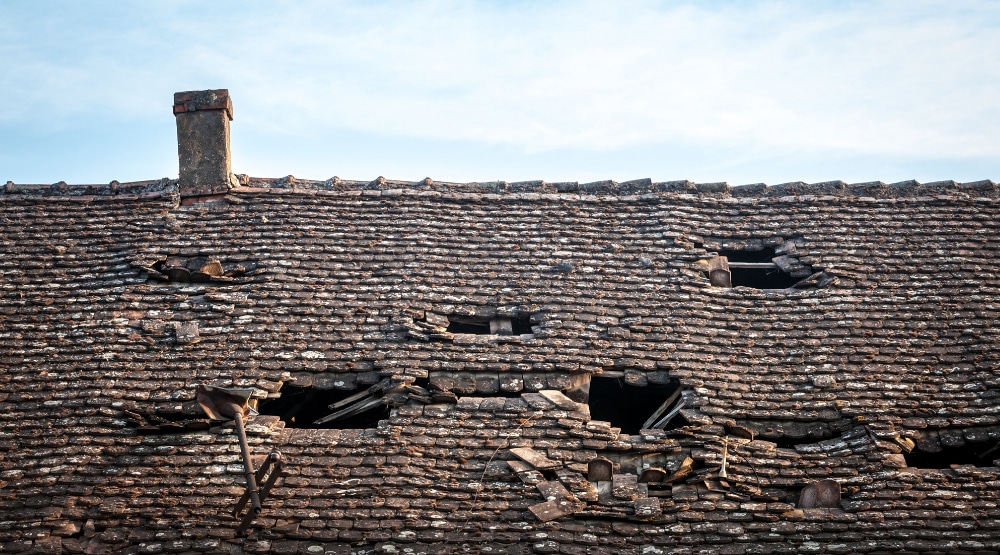
When wood deteriorates in a tile roofing system, it can result in loose tiles. The weakened wood can no longer securely hold the tiles in place, causing them to slip or even go missing. This creates gaps and spaces between the tiles, allowing water to seep into the underlying structures of the roof. As a result, water damage can occur, leading to further deterioration, rot, and even structural damage.
Recognizing the signs of deteriorated wood is crucial for addressing the issue promptly. Look out for tiles that are slipping, sliding, or missing, as these can indicate underlying wood deterioration. Other signs may include sagging or bowing of the roofline, visible rot or decay on the wooden components, or increased water leaks during rainstorms.
If any signs of deteriorated wood are observed in a tile roofing system, it is highly recommended to seek immediate professional attention. Roofing experts can assess the extent of the damage, identify the causes, and provide appropriate solutions to repair or replace the deteriorated wood and ensure the integrity of the roofing system.
Leave the slipped tile as it is.
When a tile slips in a roof, it is important to address the issue promptly to prevent further damage. However, there are instances when it is not recommended to repair a slipped tile, particularly if it is in a difficult-to-access area of the roof.
Attempting to repair a slipped tile in a difficult-to-reach location can pose various risks. Stepping on other tiles to reach the slipped tile can potentially cause additional damage, leading to more extensive repairs. Moreover, navigating a challenging area of the roof without proper training and equipment can be hazardous and increase the risk of accidents and injuries.
In such cases, it is essential to involve a professional roofer for an assessment. Professional roofers have the expertise and experience to evaluate the situation accurately. They can determine whether alternative repair methods, such as using a roof ladder or specialized tools, are feasible or if a temporary solution is necessary until further repairs can be conducted.
By involving a professional roofer for an assessment, homeowners can ensure that the slipped tile is properly addressed without risking further damage or compromising their safety. It is always better to seek expert advice when dealing with difficult-to-access areas of the roof to ensure the best possible outcome.
Some of the benefits of regular inspections include extending the lifespan of the roof, reducing the risk of leaks and water damage, and avoiding expensive repairs. Additionally, a well-maintained roof improves the overall energy efficiency and insulation of the building, resulting in lower utility costs.
Working with a local roofing contractor ensures that they are familiar with the specific challenges and weather conditions in your area. They have the expertise and knowledge needed to identify and address potential issues before they become major problems.
Talk to a Professional
When it comes to roof tile repairs, seeking the assistance of a professional roofer can make all the difference. While it may be tempting to attempt to repair slipped tiles on your own, doing so can result in costly damages and potential safety risks.
By engaging the services of an experienced professional, you can benefit from their expert inspection and repair skills. Their trained eyes can identify underlying issues that may not be immediately apparent, preventing further water damage that could lead to mold growth or the need for a complete roof replacement.
Not only will a professional roofer provide a cost-effective solution to your roof tile repair needs, but their expertise will also ensure lasting and aesthetic results. They have access to specialized tools and techniques that enable them to address the specific requirements of different roof types, including clay, concrete, and slate roofs.
Moreover, professional roof repair companies are equipped with the necessary safety measures to navigate challenging areas of your roof without compromising their well-being. This means you can have peace of mind knowing that the repair work is being carried out safely and efficiently.
You May Also Like...
Roof Lanterns and Roof Lights Installation and Repair
Find My Local Expert Roof Lanterns and Roof Lights Installation...
Read MoreRidge Tile Fixing
Find My Local Expert Ridge Tile Fixing The top of...
Read MoreGuttering, Fascia and Soffit Repair and Replacement
Find My Local Expert Guttering, Fascia and Soffit Repair and...
Read MoreCeiling Leaks? Blame Clogged Gutters: Prevention Tips & Tricks
Find My Local Expert Ceiling Leaks? Blame Clogged Gutters: Prevention...
Read MoreGet a quote from our recommended professional!
My Trusted Expert Guarantee
Experts Have Been Vetted & Approved
